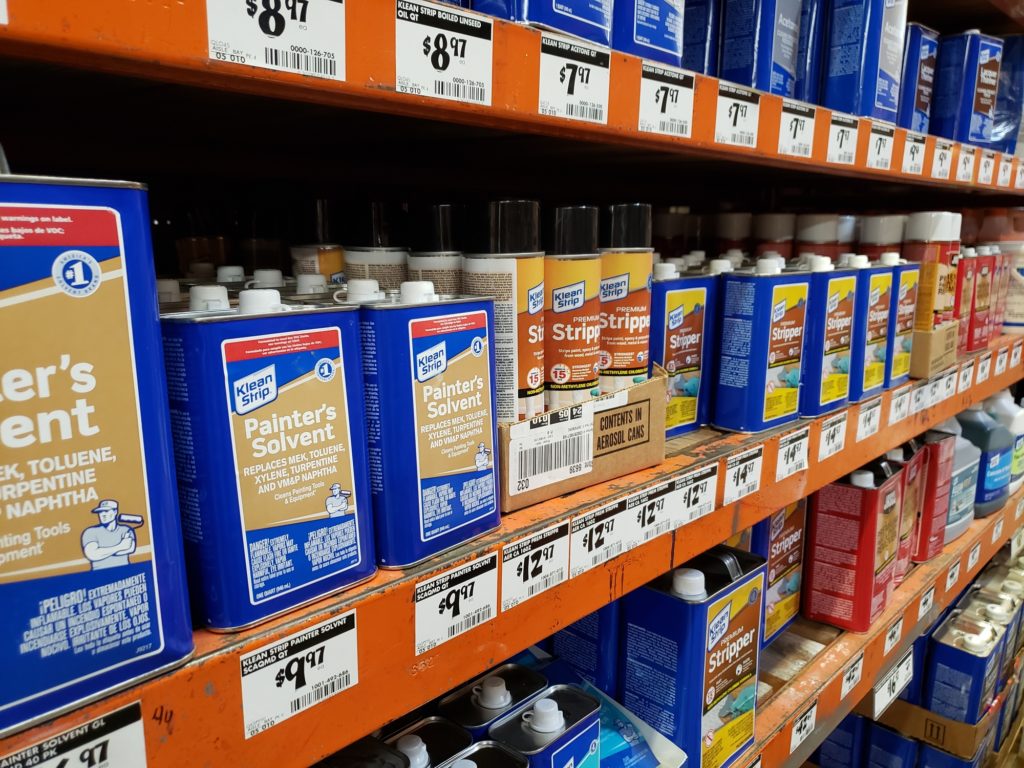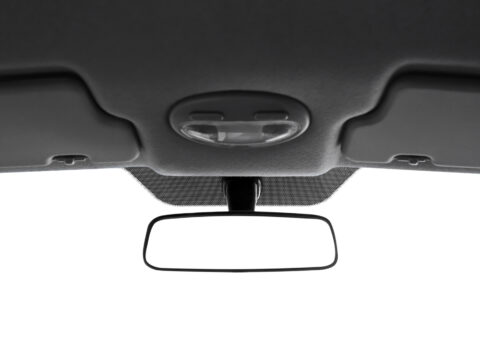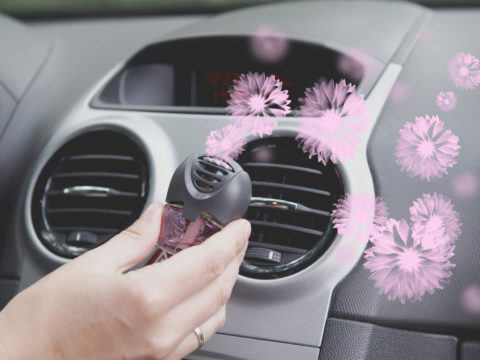Acetone is a clear, colorless solvent commonly used as a paint remover.
You can use acetone on car paint as long as you are trying to remove the paint and you do not leave it on for too long. Otherwise, it can damage your car after it dissolves the paint.

Contents
Using Acetone on Car Paint
You need to be careful when using acetone on car paint. The chemicals in paint and the chemicals in the acetone mix easily, and the acetone will soften the paint. This chemical reaction is helpful if you want to remove your car paint, but it will cause irreversible damage if you do not.
However, it has applications if you have paint on a car where you do not want it. Likewise, if you have some excess paint, like spray paint or house paint, you can use acetone to remove it. If you are repainting a car and end up with paint on the ground or anywhere else, you can use acetone too.
To remove the unwanted paint from the ground or little droplets on your car, put some acetone on a rag and rub the surface for a few minutes until it starts to come off. Avoid rubbing areas where there is no paint to ensure the acetone does not damage the ground, car, or anything else.
If you end up with acetone on your car where you do not want it or are ready to remove it, you can use a wet cloth on the acetone. Water is the best and safest option to remove the acetone before it can strip the paint and cause damage.
Is Acetone Safe To Use on Car Paint?
Acetone is safe to use on car paint as long as you are trying to remove it. But, you must be careful if that’s not your plan. When the acetone comes in contact with paint, it softens and loosens it from the vehicle’s body.
You should also not smoke near your car when using acetone because it is highly flammable. You need to clean up acetone well from your car, the area where you are working, and off your skin to prevent any accidents.
And acetone can be potentially harmful if you breathe too much of it in or get it in your eyes or mouth. With that in mind, use protective equipment and ensure you are outside or have good airflow when using acetone.
What Does Acetone Do to Car Paint?
Acetone is a solvent, meaning it will thin and soften car paint. The longer you let acetone sit on car paint, the more it will dissolve. Indeed, it can even start to ruin the body of the car if you let it sit for too long.
Not only does acetone dissolve car paint, but it can ruin new paint if it comes in contact with the solvent. If you are removing car paint before repainting, clean up the acetone from your painting area. Moreover, ensure it is cleaned off the car well to allow the new paint to stay on and not dissolve.
How Do You Use Acetone on Car Paint?
To successfully use acetone to remove car paint, you must first prep the car. Make sure all windows, door handles, and any parts of the car with paint you do not want to remove are protected. The best way to do this is with painter’s tape.
Then, sand the paint to loosen it. By taking this step first, you remove the top layer and make it easier for the acetone to penetrate the paint. If it is already coming off, you may not have to sand too much, and you could use a paint scraper to get some of it off.
Now, the acetone should take the paint off quickly. Remember, you should leave the acetone on for no more than 30 minutes. Even then, that time might be too long if the paint is peeling or you have an older car.

Will Acetone Damage Car Paint?
Acetone will damage car paint and remove it entirely, if left on for long enough. If you leave acetone on for around 30 minutes, the paint will start to strip from the car. And, sometimes, it does not take that long for the car paint to begin to be damaged.
So, if you do not want the paint to come off your car, you should not let acetone stay on it for more than a few minutes.
Acetone Alternatives for Removing Paint From Car Body
If removing car paint with acetone seems too risky, you may want to try another, less-harsh method. Some of these methods may take more time and work than acetone, but they are less likely to damage your car during the paint removal.
Mechanical Paint Removal
First, you can use a paint remover, a common technique used by many auto shops. They utilize chemicals or a scraper to scuff the paint off. An automatic paint remover is an easy alternative to putting acetone on the car yourself, but it can also be quite harsh on the car.
Sandpaper
Another alternative to removing paint from a car is to use sandpaper. It takes a lot of work to scrape every inch of your car’s surface until all the paint is off. But, this option is an excellent choice for older cars susceptible to damage from harsh chemicals.
Paint Scraper
If you do not want to use sandpaper, you can use a paint scraper, but it is just as much work, especially if you have a larger car. But, this might be the most straightforward option if your paint is already peeling off.
Acid Dripping
This is a relatively new method and can be especially advantageous for eliminating rust. However, it is a complex and challenging process best left to a professional shop unless you have experience with the technique.
Rubbing Compound
Like sandpaper, this can be a time-consuming option. Yet, it’s wise to take your time as a rubbing compound can harm your vehicle. You’ll want to use a cloth in a circular motion. Be gentle and focus on a small area at a time as you could seriously damage your car’s surface.














